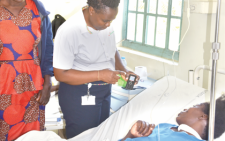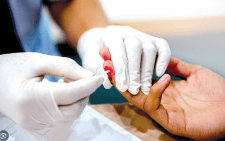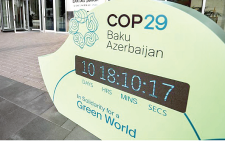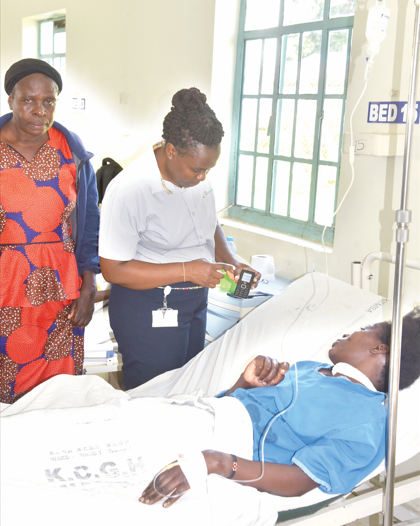The majority of Kenyan adolescent girls and young women are abusing emergency contraception pills, popularly known as P2, because they can easily access them over the counter in most pharmacy outlets.
A population report shows that some girls consider P2 pills an ordinary contraceptive and end up using them multiple times in a week or a month.
It is estimated that girls in Kenya have their sexual debut (first sexual intercourse) on average at the age of 16 years, one year later than boys.
Reproductive health experts argue that emergency contraceptives should be used after unprotected sex, when there are concerns of possible contraceptive failure, from improper or incorrect use such as condom breakage.
Sexual encounters
A woman may also use the P2 pills after a sexual encounter in case of slippages; three or more consecutively missed combined oral contraceptive pills, or three days late during the first week of the menstrual cycle.
National Council for Population and Development (NCPD) data further showed that there is an increase in the use of contraceptives by married and unmarried sexually active adolescents and young people.
“Use of modern contraceptives among married girls aged from 15-19 years increased from 20 per cent from 2008-9 to 37 per cent in 2014 and 2022. Use of modern contraceptives among sexually active unmarried adolescent girls increased from 23 per cent in the years 2008-9 to 48 per cent and 43 per cent in the year 2014 and 2022, respectively,” NCPD stated in the 2024 State of Kenya Population Report.
Youthful females
As Kenya struggles to satisfy demand for contraceptives among women, young females are the most affected which explains why most resort to using the P2.
“Among the adolescents aged from 15-19 years, the unmet need is 22 per cent for the currently married, and 35 per cent for the sexually active unmarried women. These are higher percentages compared to the national unmet need for all women in reproductive age (15-49) years at 14 per cent (currently married women) and 19 per cent (sexually active unmarried women),” the report said.
Additionally, the burden of teenage pregnancy is still high, with 15 per cent of adolescent girls aged from 15 to 19 years reported to have been pregnant in 2022.
NCPD figures showed that in 2023 the percentage of women aged from 15-19 who have ever been pregnant were highest in Samburu (50 per cent), West Pokot (36 per cent), Marsabit (29 per cent), Narok (28 per cent), Meru (24 per cent), Homa Bay (23 per cent), Migori (23 per cent), Kajiado (22 per cent), Siaya (21 per cent), and Baringo (20 per cent) and lowest in Nyeri and Nyandarua with 5 per cent each.
“Teenage pregnancy remains a societal concern that calls for targeted interventions across counties to promote access to reproductive health information and end teenage pregnancy by the year 2030, as per the country’s ICPD25 Nairobi summit commitments,” the report added.
According to NCPD statistics, the percentage of women aged from 15-19 years who have ever been pregnant increases with age, from three per cent among those aged 15 to 31 per cent among those aged 19 years.
However, the number of teenage pregnancies has reduced with an increase in educational levels, which underscores the importance of education in access to sexual reproductive health information to the women in this age group.
Primary education
Further girls from poor families are likely to get pregnant in their teenage years compared to their counterparts from rich families.
Adolescent girls aged from 15-19, NCPD said are at greater risk of child marriage at 10.8 per cent, compared to 4.2 per cent of boys at the same age.
“Rural, poor and uneducated adolescent girls are at highest risk of early marriage. Girls with a high education level are likely to delay marriage. In 2014, the median age at first marriage among women aged from 25-to 49 years was 17.9 years among those with no education; 19 years among those with primary education; 21.5 years among those with secondary education; and, 24.9 years among those with post-secondary school education,” the NCPD report noted.
The NCPD report that contains statistics on various topical issues on population also revealed that girls are more likely to experience sexual and gender-based violence than boys.
In 2023, bout 7.2 per cent of girls aged 15-19 years reported that they had experienced sexual violence at some point in their lives while 11.3 per cent of young women aged 20-24 years had experienced sexual violence at some point in their lives.
Substance abuse
Among the male gender, a slightly lower proportion of young men reported experiencing sexual violence; 4.8 per cent among those aged 15-19 years have ever experienced sexual violence, and 8.1 per cent experienced sexual violence among those aged 20-24 years.
NCPD also raised concern that there is a high prevalence of drug and substance abuse in Kenya among adolescents and young people where one in every 9 nine youths (about 632,846) aged between 15 and 24 years were currently using at least one drug or substance of abuse.
Alcohol, which is consumed by over 370,000 youth tops the list of most abused substances, followed by Miraa chewed by 260,000.
Sadly, the youth aged 15 to 24 are also predisposed to acquire HIV for using injectable drugs where in 2022, the government targeted over 2000 drug users with HIV services.

















